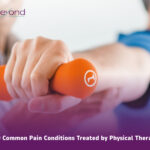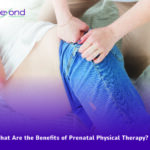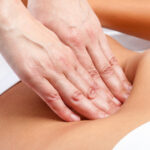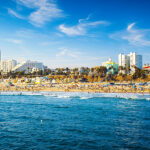Platelet Rich Plasma injections, also known as PRP, is becoming more common practice in the medical field. Although not covered by insurance, more and more research is supporting such conservative treatment for muscle, joint, tendon and ligament injury, as a way to prevent more invasive procedures, like surgery. Over the years many famous athletes have discovered the benefits of PRP. And now it is beginning to become more well known by everyday people as a treatment option. The use of physical therapy after PRP injections is prescribed by most doctors as a beneficial way to optimize the healing process.
What is PRP? Simply, PRP is essentially a concentration of platelet rich protein plasma that is separated from your own blood during a blood draw. This plasma is treated in various ways depending on the techniques used by the doctor treating you. They then re-inject this protein rich plasma into an injured area like your knee or shoulder to heal the joint itself or damaged soft tissue (i.e. muscles, ligaments or tendons). Often times, after injections patients will experience swelling, pain and limited range of motion as part of their recovery. This can be a normal part of the PRP healing process. Some may experience more or less pain than others. It simply depends on how your own body reacts.
As a Physical Therapist, I have seen many patients for rehabilitation post PRP injections. Some medical doctors also perform procedures utilizing Stem cells, Ozone or versions of PRP like Regenexx and Regenokine in order to help repair soft tissue and bone. It is common practice to have a single round of injections, or a series of injections by a medical doctor who specializes in Physical Medicine and Rehabilitation, also known as a Physiatrist. Every doctor has a different protocol. Therefore, it is important to ask questions as to what to expect before, during and after the procedure. Most doctors prescribe physical therapy 7-10 days after PRP injections. Why? Because the inflammatory response occurs during the first 7-10 days. The patient is to rest and not stress the area injected. Many doctors do not suggest icing or taking anti-inflammatory agents because they actually want the inflammation to occur as it is part of the natural healing process. However all doctors vary. Confirming this with your doctor is important. After the first 7-10 days post PRP, physical therapy will commence.
Many patients ask why they need Physical therapy after PRP injections? I have met patients who had PRP but did not receive physical therapy soon after. Whether the doctor chose not to prescribe it, or the patient decided not to follow through with it, it wasn’t part of the protocol. On their own, injections can help decrease pain and improve mobility. However, the injections alone may not get a patient back to 100%, or close to it. Physical therapists like myself who specialize in rehabilitating patients after regenerative injections know when and how to help a patient regain range of motion, strength, flexibility, body awareness and dynamic functional movement safely and effectively after such injections. Physical therapy after PRP injections can enhance the healing effects of PRP as well as improve a patient’s quality of life and general well being.
What Should I expect? I always tell patients to give their body a minimum of 6-8 weeks to start feeling the positive effects of such injections. Why 6-8 weeks? Because this is the natural progression of time it takes for your body to start healing soft tissue or bone. Patients ask me all of the time why it takes so long. It is simply our body’s natural physiology. Sometimes we can speed things up a bit, but it is hard to beat mother nature. After several months, range of motion is restored, pain is reduced and strength begins to return. Once this occurs, we can push a little more to increase the strength, power and endurance of the body. It is important to remember, every body is different, and each joint in our body heals differently depending on our day-to-day activity and goals. The time frame of healing can vary based on the age of a patient and their level of physical activity. Working with a 75 year-old patient who wants to avoid a knee replacement versus a 40 year-old patient repairing a meniscus tear in their knee training for a triathlon will vary in their progress and rehab while in physical therapy.
Physical therapy after PRP injections is a great combination to help a patient heal from a muscle, tendon, ligament or joint injury. This combination can build stability and strength leading to a long-term high quality of life while reducing the chance of invasive surgical procedures.
Something to keep in mind, address an ache or pain before it is too late. Often we find ourselves waiting to go to the doctor until we can hardly move our arm, take a step or sleep without pain. It is important to retrain our brains into thinking injury prevention rather than recovery. We always seek help when we are at our wits end. Rather than having a certain ache or pain creep up on us over several weeks, months or even years… Get into a Physical Therapist or Physiatrist within the first few weeks after an injury.
PRP and physical therapy are considered conservative non-invasive treatments. Together, they can help stop an injury in its tracks. Physical therapy after PRP injections can also slow down the domino effect of physical compensations if an injury is caught in time. One sprained ankle can lead to a limp causing knee, hip or back pain. Which leads to weakness, muscle imbalances, and potentially more injuries. Don’t let it get this far. Get checked-out by a specialist who focuses on regenerative conservative treatments and go to a physical therapist experienced in physical rehabilitation for both before and after PRP injections.
















